What Do You Need For Gardening With A Listst
What tools do you need for vegetable gardening? Luckily, it doesn't take much! There are some tools and supplies that can make gardening a lot simpler, though. Here's an overview of our 10 most trusty gardening tools—as well as some tips on how to care for them.
When starting a garden for the first time (or the second or third time), the right tools will make a big difference. Just remember: Whether you shop in garden centers or online, it can get easy to get caught up in all the newfangled gardening tools that you'll see. Focus on basic, quality, durable tools. As you see from these photos, some of our tools aren't too fancy but they have lasted (almost) a lifetime!
Note: We have included some links to products as examples. We do not endorse any of these brand or products; they're only provided in order to help our readers better understand the tool that we're referencing. We leave it to you to determine the best tool at the right price point for your needs.
10 Tools for Digging and Preparing the Garden Bed
If you only can afford a few tools, we'd say that an unbreakable hand trowel, pruners, and shovel will take you far. But as you garden, you'll also start to figure out what you really need (and it most likely be on this list!).
1. Hand Trowel
A trowel is a small shovel used for digging small holes for planting seeds, measuring depths in the soil, and digging up tough weeds. Look for a trowel with a narrow, sturdy blade (stainless steel is a good option) that will cut into the soil easily, as well as one that has a comfortable grip. It's a gardener's best friend.
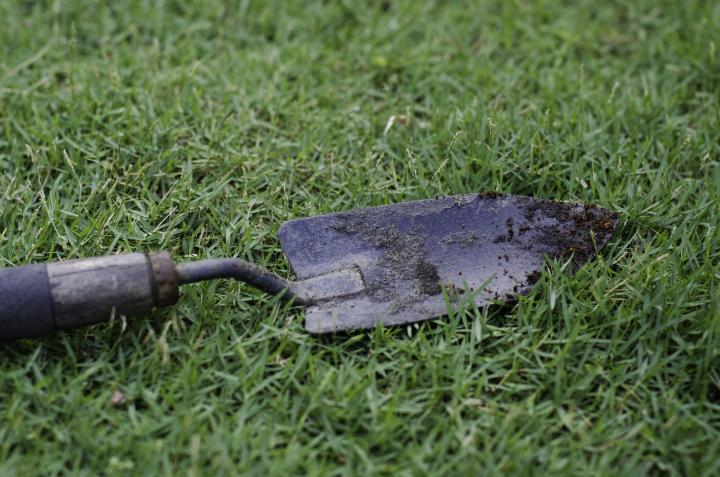
2. Hand Cultivator
A hand cultivator is like a mini garden fork, often with three tines. It's useful for scratching the soil to remove small weeds and rough up the soil, both in the garden and in a container.
You can often a hand trowel and hand cultivator available in a set (sometimes with a pruner) since they're such essential gardening tools.
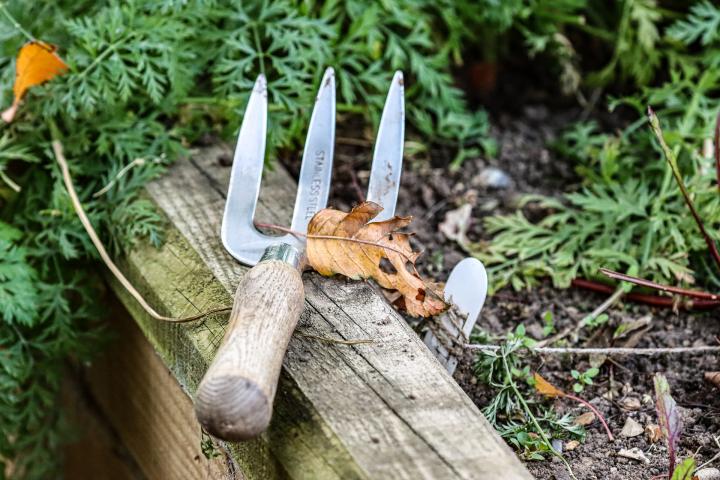
3. Garden Fork
A garden fork (similar in appearance to a pitch fork) is useful for turning over soil and compost, digging out root crops, and dividing perennials. Its long, metal tines allow it to easily penetrate the soil and avoid the smaller rocks that would get in the way of a shovel.
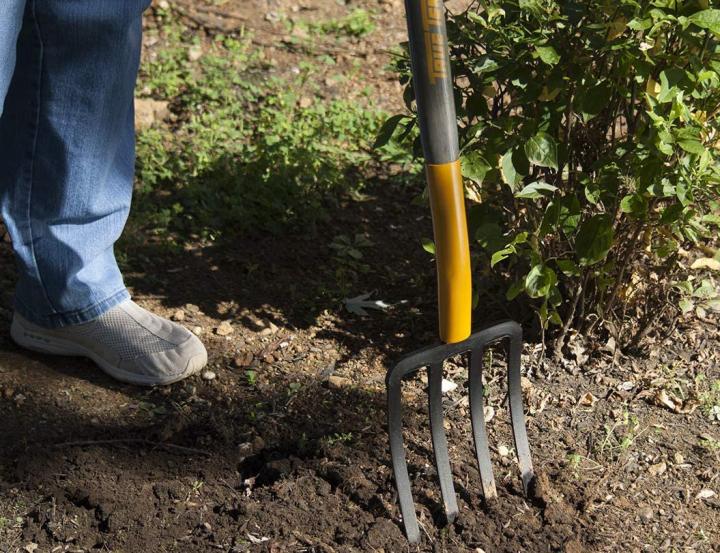
4. Garden Shovel or Spade
A key tool in a gardener's arsenal, a shovel has a pointed, rounded blade and is useful for digging holes and moving soil. A spade is a type of shovel that has a straight-edged, flat blade and is good for digging straight-sided holes, cutting roots, removing plants and weeds, and making edgings.
Digging isn't easy, so pay attention to quality here. When choosing a shovel or spade, the longer the handle, the more leverage you will have. Look for forged metal with a sharp blade edge. Here's a good example of a long-handled digging shovel.
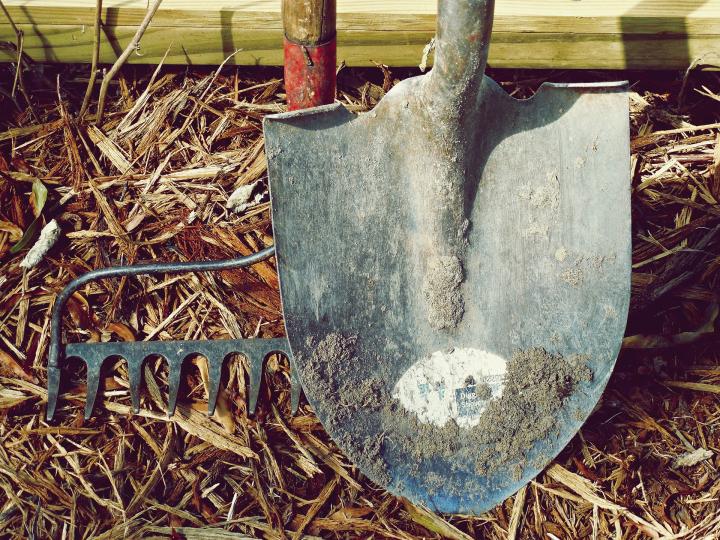
5. Garden Hoe
A hoe is used to remove shallow-rooted weeds. It is also used to create furrows for planting seeds and to break up clumps of soil. Hoe heads come in many different shapes and sizes. Make sure that the metal head is securely attached to the handle. A smooth wooden handle will resist splintering.
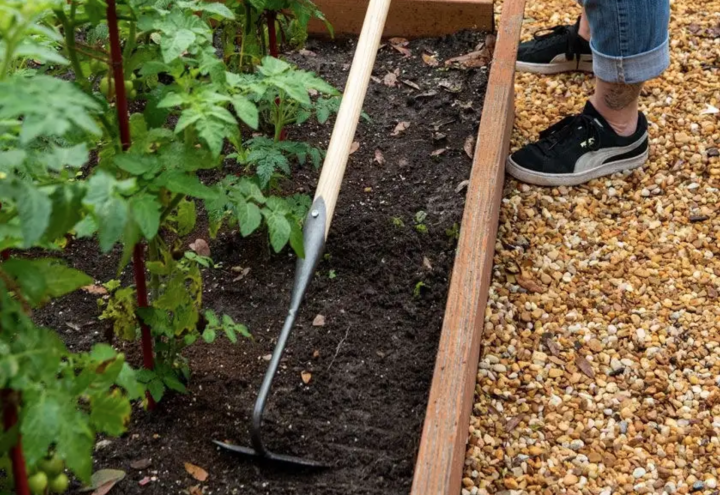
Credit: Gardeners.com
6. Garden Rake
A garden rake or ground rake has metal tines and is used for smoothing soil and clearing the garden of debris or small rocks.
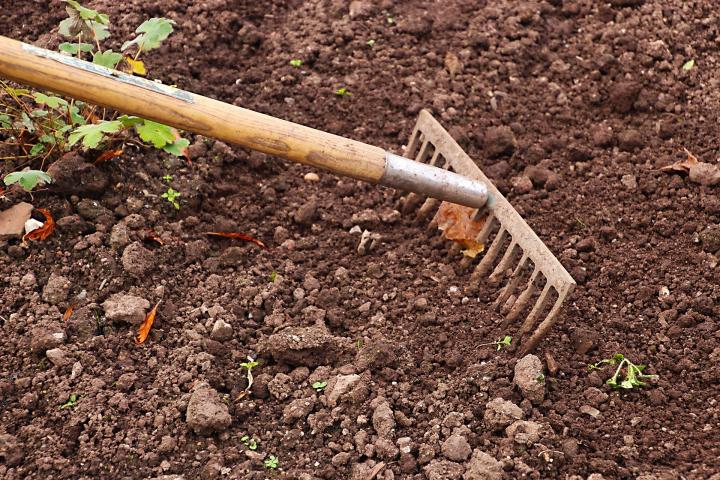
Tools for Pruning, Deadheading, and Harvesting
7. Gardening Gloves
You might not consider gloves essential, but a good pair of gloves can help to prevent blisters and cuts, and will keep your hands clean. Of course, there is certainly something to be said about feeling the dirt between your fingers! For digging, look for gloves that have waterproofing along the palm and fingers. Many gardeners like nitrile gloves like these. Consider longer gloves if you need more protection.
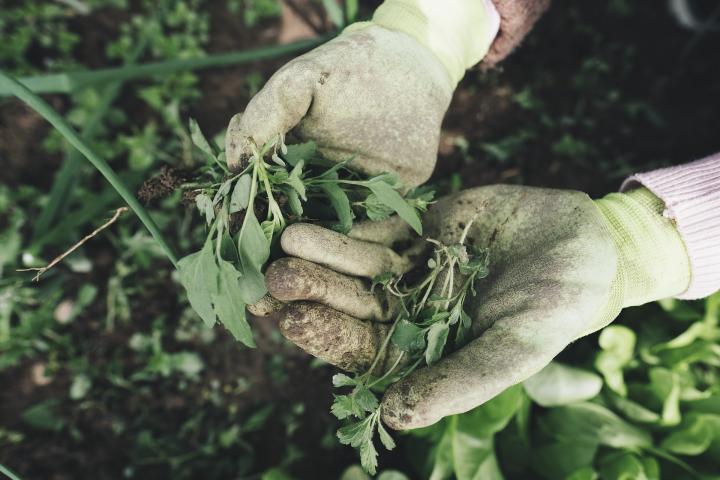
8. Hand Pruners or Pruning Shears
If we had to pick our most essential tool, it would be the garden pruner. A hand pruner is extremely versatile to cut or trim small branches from perennial plants, shrubs, and trees. Choose a bypass-style pruner, meaning the top blade slices pass the bottom blade, resulting in very quick, tear-free cuts so plants can heal quickly. (With anvil pruners, the other common variety, the top blade chomps down onto the bottom blade. This can damage the stem or branch that you're cutting.) Hand pruners can also be useful for harvesting ripe vegetables without damaging the plant. Look for razor-sharp blades and a comfortable grip.
By-pass pruners are an essential purchase and there many wonderful options.
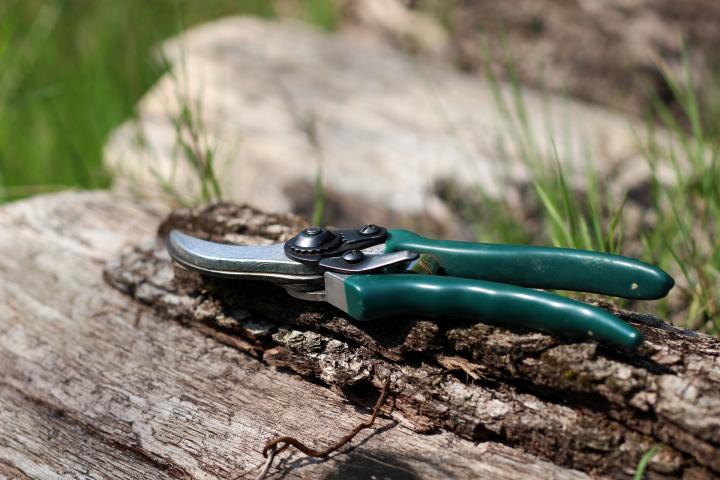
9. Garden Scissors
Garden scissors or trimming scissors have very thin, super-sharp blades that are used for deadheading (the removal of dead flowers), snipping herbs and flower stems, and pruning delicate plants. It's not meant to replace a hand pruner, but to complement it. Look for ergonomically-designed handles.
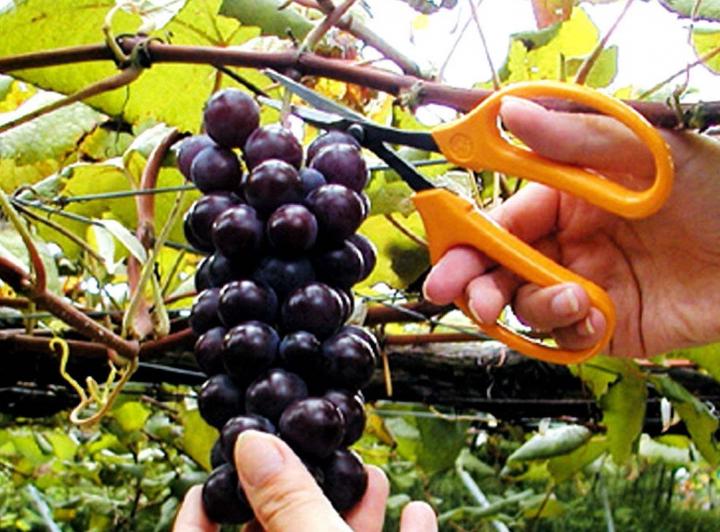
10. Extra: Hori-Hori Knife
This is not an "essential" tool, but worth a splurge. The hori-hori gardening knife is a fairly recent addition to Western gardens. Commonly used in Asia, Hori-hori knives (hori meaning "to dig" in Japanese) are a mix between a knife and trowel, which makes it great for digging small planting holes, harvesting, and cutting down weeds. Some types feature a serrated edge to make cutting even easier, while others feature a ruler printed onto the blade, which helps when measuring planting depth.
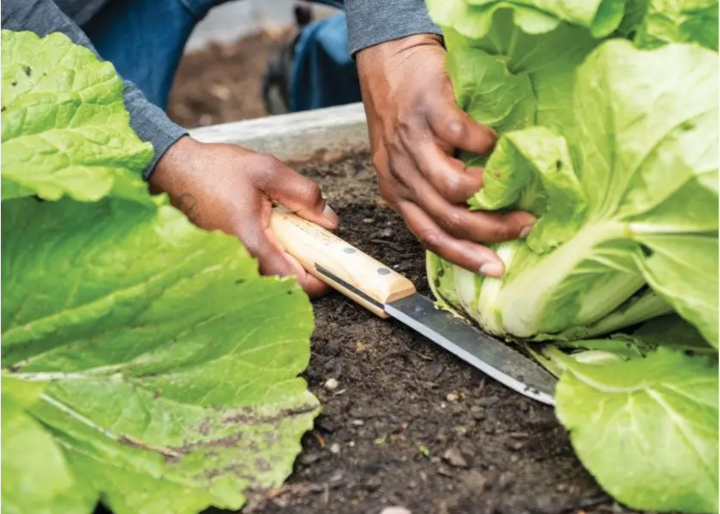
Credit: Gardeners.com
To read more about the many different types of pruning tools, including loppers and hand saws, read Pruning 101: Trees and Shrubs!
Tools for Watering
Besides your basic garden tools mentioned above, think about how you plan to water your plants. You'll want to have a water source nearby.
11. Garden Hose
What you need most is a garden hose which carries water long distances. Attach two or more together to reach farther. A cheap hose can be very frustrating; we advise getting a quality rubber hose and look for nickel-plated, heavy-duty brass couplings at both ends of the hose. Arable nozzles or sprayer heads adjust to deliver everything from a gentle sprinkle to a hard stream. Brass and metal parts and fittings are more durable than plastic. Here's a good example of a high-quality water hose.
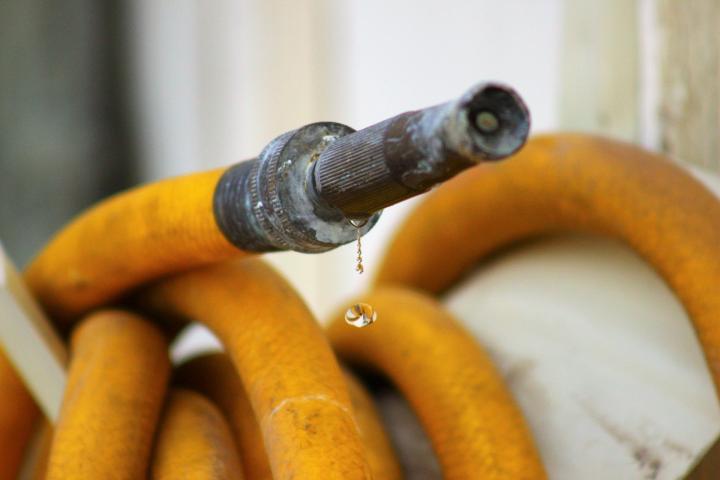
12. Soaker Hose
The ideal type of garden hose, soaker hoses are low-pressure porous hoses that deliver droplets of water to your garden beds. They are meant to be laid out in the garden around crops (and even landscape shrubs and lawns). When the water is turned on, they leak water through their permeable material and water the garden slowly, steadily, and consistently—which is both important for healthier crops and drastically reduce water waste. There are also raised bed drip irrigation kits.
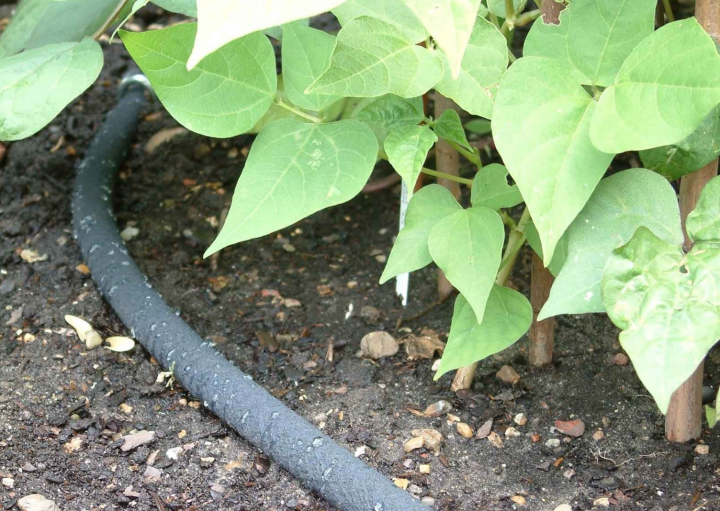
13. Watering Can
Able to evenly water plants anywhere, a watering can is best suited for small watering jobs. It should have a capacity of a least 2 gallons but be easy to carry when full. Select a plastic or metal model with a removable spout. It's also often beneficial to keep a smaller watering can around, too—especially when it comes to watering around small container plants.
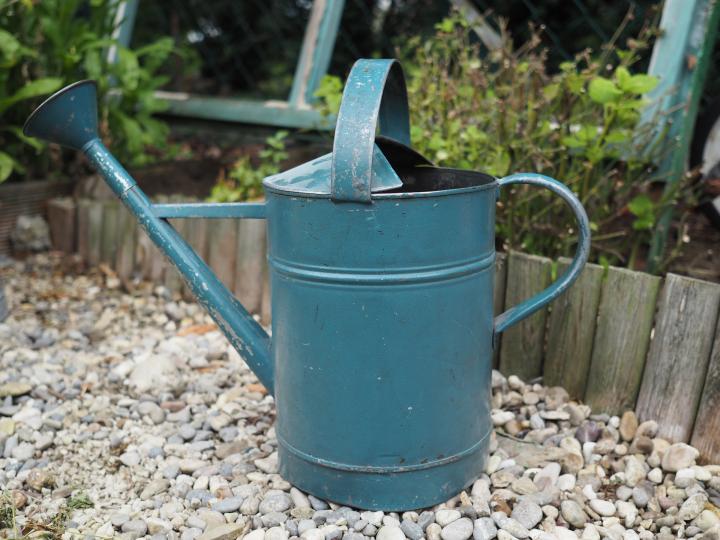
14. Extra: Watering Wands
If you're someone who grows in flower boxes and overhead baskets, watering wands have long shafts to make it easier to reach out to water. Unlike a standard hose nozzle, a watering wand delivers a soft, soaking shower. They're also handy to water closely spaced plants in your garden without stepping on the soil.
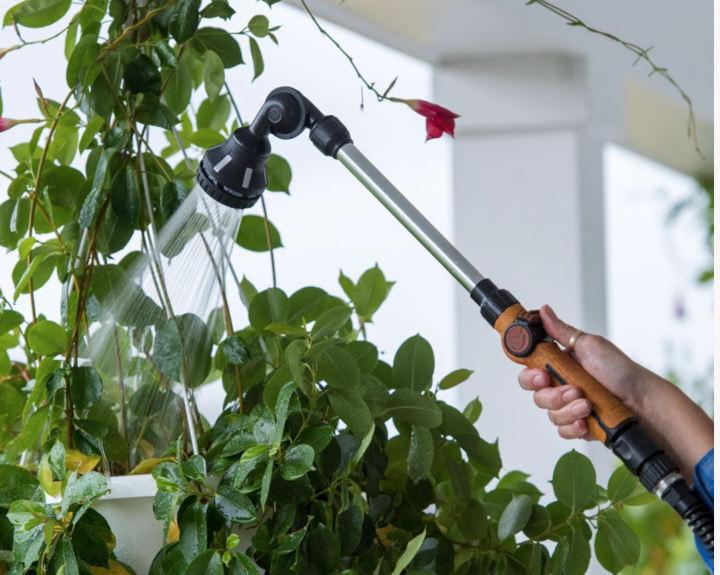
Credit: Gardeners.com
Miscellaneous Tools & Supplies
15. Padded Kneelers
Padded kneelers (aka knee pads) can help to lessen the pressure on your knees. Kneeling is actually easier on your back than squatting. If both positions are too painful, bring a stool out to the garden to sit on or simply sit on the ground.
16. Leaf Rakes
Rakes are purpose-built: The leaf rake is lightweight and used for raking up leaves and lawn clippings and for spreading mulch. Metal rakes will last longer and perform better than plastic or wooden ones. Buy a rake that is securely attached to the handle; none of the parts should wiggle!
17. Wheelbarrow or Yard Cart
No matter the size of your garden plot, a wheelbarrow always comes in handy. A wheelbarrow or yard cart is used for hauling soil or leaves, collecting debris, and countless other tasks. The sturdiest wheelbarrows are made of one piece of heavy steel for heavy loads, but heavy-duty plastic wheelbarrows are a better choice for home gardeners. A wheelbarrow is easier to maneuver than a two-wheel yard cart, but less stable. Using a wheelbarrow or yard cart can also help to preserve your back, which is always at risk of strain from constantly bending to plant and weed your garden.
18. Extra: Soil Monitor
A very handy and inexpensive "extra" is a small soil monitor that you stick in the ground to read water, sun and pH value. You'll know when it's time to water, whether the plant is getting enough sun, and if the soil is acidic or alkaline.
How to Care for and Sharpen Gardening Tools
Treat your tools to a little bit of TLC and they should last for many years.
Every Use
- Always clean off any tools that come into contact with the soil before storing. Blast mud off with a jet of water from the hose, or if dirt has hardened soak metal parts first, then wipe clean with an old rag.
- After using pruning tools, remove any ingrained dirt or sap using a wire brush or wire wool if necessary. Wash them in soapy water then dry them.
Once a year or more often, depending on usage
- Digging tools and hoes need an occasional coating of oil (any vegetable-based oil will do) to prevent the blades or tines from rusting. Use a wire brush to remove any ingrained dirt or rust spots, then wipe clean with a rag. Use a clean cloth to apply the oil.
- To sharpen digging tools and hoes, use a metal file on both the front and back edges of the blade, working at a shallow angle. Clamping the tool in a vice will make this easier. Finish by oiling the blade edges.
- Wooden handles can be cleaned then smoothed off with sandpaper or a sanding sponge. Polish them with a natural, protective oil such as teak oil.
- To sharpen pruners, loppers and shears, hold the tool firmly in position and use a file, whetstone or sharpening stone appropriate to the size of the blade to sharpen it. Only sharpen the cutting blade itself, working the stone in the same direction as the bevel – two to five passes of the file or stone should be enough. Smaller blades may need to be worked in a circular motion.
- Tighten up any loose bolts on moving parts and check if any worn-out parts need replacing. Finish by spraying with a tool lubricant. Don't forget to apply lubricant throughout the year, particularly after heavy periods of pruning.
Free Online Gardening Guides
We've gathered all of our best beginner gardening guides into a step-by-step series designed to help you learn how to garden! Visit our complete Gardening for Everyone hub, where you'll find a series of guides—all free! From selecting the right gardening spot to choosing the best vegetables to grow, our Almanac gardening experts are excited to teach gardening to everyone—whether it's your 1st or 40th garden.
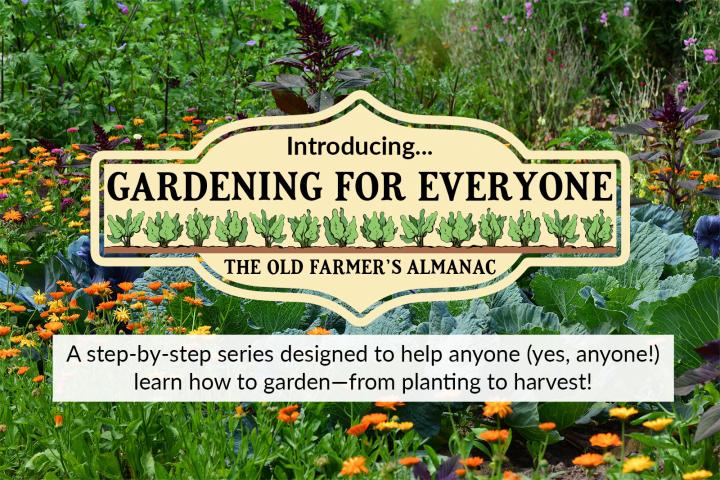
What Do You Need For Gardening With A Listst
Source: https://www.almanac.com/gardening-tools-guide
Posted by: bradleypand1956.blogspot.com

0 Response to "What Do You Need For Gardening With A Listst"
Post a Comment